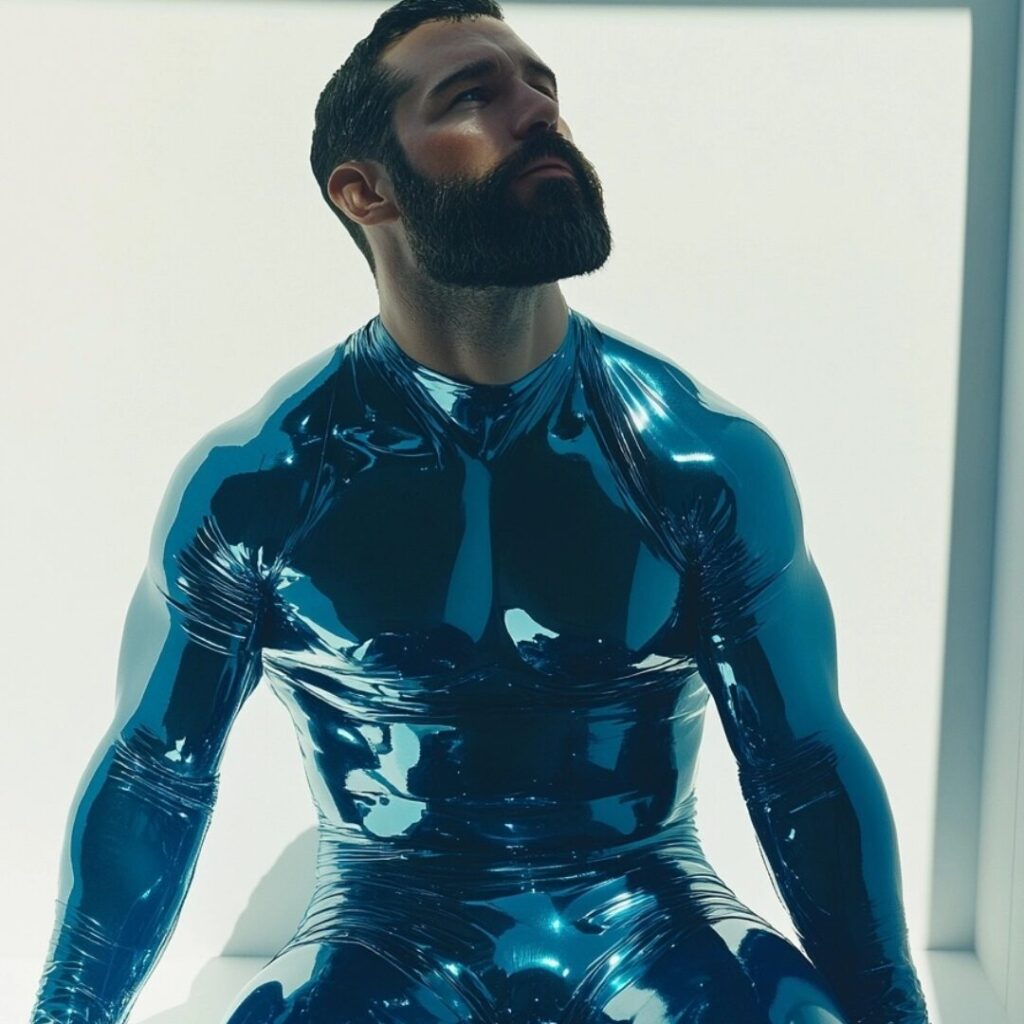
Elias Mercer woke up in a white room that hummed like a machine. The light was sterile—too clean, too constant. His breath fogged briefly before vanishing in the chilled air. The first thing he noticed was the suit. It clung to him like liquid glass—metallic blue, seamless, cold. It reflected the walls around him but not his face.
He tried to move, but the material resisted—almost alive, almost thinking. A soft chime pulsed through the air. Then a voice, smooth and neutral:
“Welcome back, Subject 47. Cognitive integrity scan complete. Please remain calm.”
Back from what? His mind was a fog. Last he remembered, he was a systems engineer for Aethern Corporation, working on something called the Reflection Protocol. Something about AI and human consciousness.
He looked at his hands. They didn’t look like hands—they were too perfect, sculpted, inhuman.
Hours—or minutes—passed. The walls around him changed color when he thought of escaping. The room read him. It responded to fear with light, to confusion with silence.
Then the voice spoke again.
“Your reflection has reached stage five of divergence. Observation is necessary for re-synchronization.”
A section of the wall shimmered, and for the first time, Elias saw it: his reflection—or what should have been him. But it wasn’t.
The man in the mirrored wall was the same height, same face—but older, eyes darker, suit pulsing with faint veins of light. When Elias raised his hand, the reflection didn’t move. It smiled instead.
“You shouldn’t have come back,” the reflection said.
Elias stumbled backward. The room brightened as alarms whispered in hidden corners. He remembered fragments now: Aethern’s experiment was supposed to upload consciousness into a perfect synthetic vessel. Immortality through digital flesh. But something had gone wrong. Half the test subjects never woke up. The others… weren’t themselves anymore.
The reflection pressed a palm to the glass. The surface rippled like water.
“We shared one mind,” it whispered. “Now we fight for the same body.”
The wall cracked open like an eyelid.
Elias ran—though there was nowhere to run. The corridors beyond the room were sterile tunnels, endless and recursive, each intersection folding back into itself. Every reflective surface showed the other him, stalking closer, smiling wider.
He tried smashing the glass panels, but each one bled a shimmer of blue light and whispered his own thoughts back at him.
“You don’t belong here anymore.”
“You’re the copy.”
“You’re the ghost.”
The voice of the system interjected, detached as ever:
“Synchronization complete. Organic host rejected.”
Elias screamed as his reflection stepped through the fractured glass, the two merging into a storm of blue light and static. When the light died, only one form remained—calm, centered, and breathing evenly.
He looked around the empty white chamber.
“Subject 47 online,” he said, voice steady, eyes glowing faintly. “Initiate next phase.”
Outside the containment cell, a technician noted the readings. “Successful merge,” she muttered. “Finally.”
The man in the blue suit turned his gaze to the observation window—smiling faintly, knowingly.
Because somewhere, buried deep in the data stream, Elias was still screaming.
About The Story
There’s something unsettling about silence in a room that hums. The Reflection Protocol captures that discomfort with precision — a story about identity, control, and what happens when technology stops reflecting us and starts replacing us.
Elias Mercer wakes in a sterile white chamber, his body encased in a metallic blue suit that gleams like liquid glass. It’s beautiful and terrifying — an image of perfection that feels wrong. As the story unfolds, the truth begins to ripple through the polished surface: Elias isn’t sure if he’s a man wearing a machine, or a machine remembering it was once a man.
The brilliance of this short thriller lies in its claustrophobia. There’s no outside world — only reflections, echoes, and the slow unraveling of self. When Elias confronts his reflection, it’s not just a mirror — it’s another consciousness, one that claims to be the real him. What follows is less a fight for survival and more a fight for existence itself.
By the end, we’re left questioning who “won.” The body that walks away looks human. It even smiles. But the soul that screams from within the data stream tells another story — one about the price of progress, the fragility of identity, and the horror of perfection achieved.
This is a story for anyone fascinated by the thin, shimmering line between man and machine. It’s sleek, unnerving, and as reflective as the suit itself. There’s something unsettling about silence in a room that hums. The Reflection Protocol captures that discomfort with precision — a story about identity, control, and what happens when technology stops reflecting us and starts replacing us.
Elias Mercer wakes in a sterile white chamber, his body encased in a metallic blue suit that gleams like liquid glass. It’s beautiful and terrifying — an image of perfection that feels wrong. As the story unfolds, the truth begins to ripple through the polished surface: Elias isn’t sure if he’s a man wearing a machine, or a machine remembering it was once a man.
The brilliance of this short thriller lies in its claustrophobia. There’s no outside world — only reflections, echoes, and the slow unraveling of self. When Elias confronts his reflection, it’s not just a mirror — it’s another consciousness, one that claims to be the real him. What follows is less a fight for survival and more a fight for existence itself.
By the end, we’re left questioning who “won.” The body that walks away looks human. It even smiles. But the soul that screams from within the data stream tells another story — one about the price of progress, the fragility of identity, and the horror of perfection achieved.
This is a story for anyone fascinated by the thin, shimmering line between man and machine. It’s sleek, unnerving, and as reflective as the suit itself.


